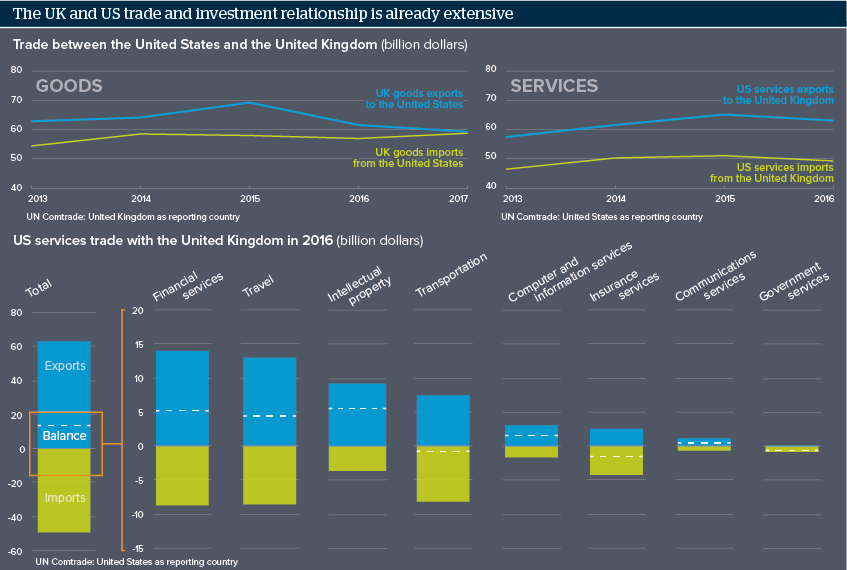US-UK trade deal comes with risks and benefits
US-UK trade ties are already strong; while a trade deal could help build these further, there is no guarantee
Source: UN; government agencies’ data; Oxford Analytica
Outlook
London and Washington want to agree a free trade agreement (FTA) quickly post-Brexit. In 2016, UK goods exports to the United States were 59.2 billion dollars, a 359-million-dollar surplus; the United States is the United Kingdom’s largest single export market and second-largest source of goods and services imports.
London wants to increase trade with non-EU countries post-Brexit (in 2016, 43% of UK goods and services exports went to EU countries; 18% to the United States). Washington wants to further President Donald Trump’s ‘America First’ agenda, including increasing exports and making new US jobs.
Both parties are security allies and established diplomatic partners and Trump’s administration speaks of ‘free, fair and reciprocal trade’. Even so, that does not guarantee easy or fast deal-making: business is business, and both sides seek maximum advantage.
Impacts
- Both governments face domestic pushback if any deal opens sensitive areas to foreign involvement, such as UK health or US manufacturing.
- The US government may want to protect its services trade surplus, potentially causing negotiations difficulties.
- A UK-US free trade deal could increase trade through each partner with third countries and blocs.
- Concluding a UK-US FTA could be easier if London secures an effective UK-EU FTA post-Brexit.
See also
- US Ireland lobby could stop US-UK free trade deal - Aug 2, 2019
- US president’s UK visit is likely to be ‘placeholder’ - May 31, 2019
- Trump UK visit carries risks for May - Jul 11, 2018
- More graphic analysis
